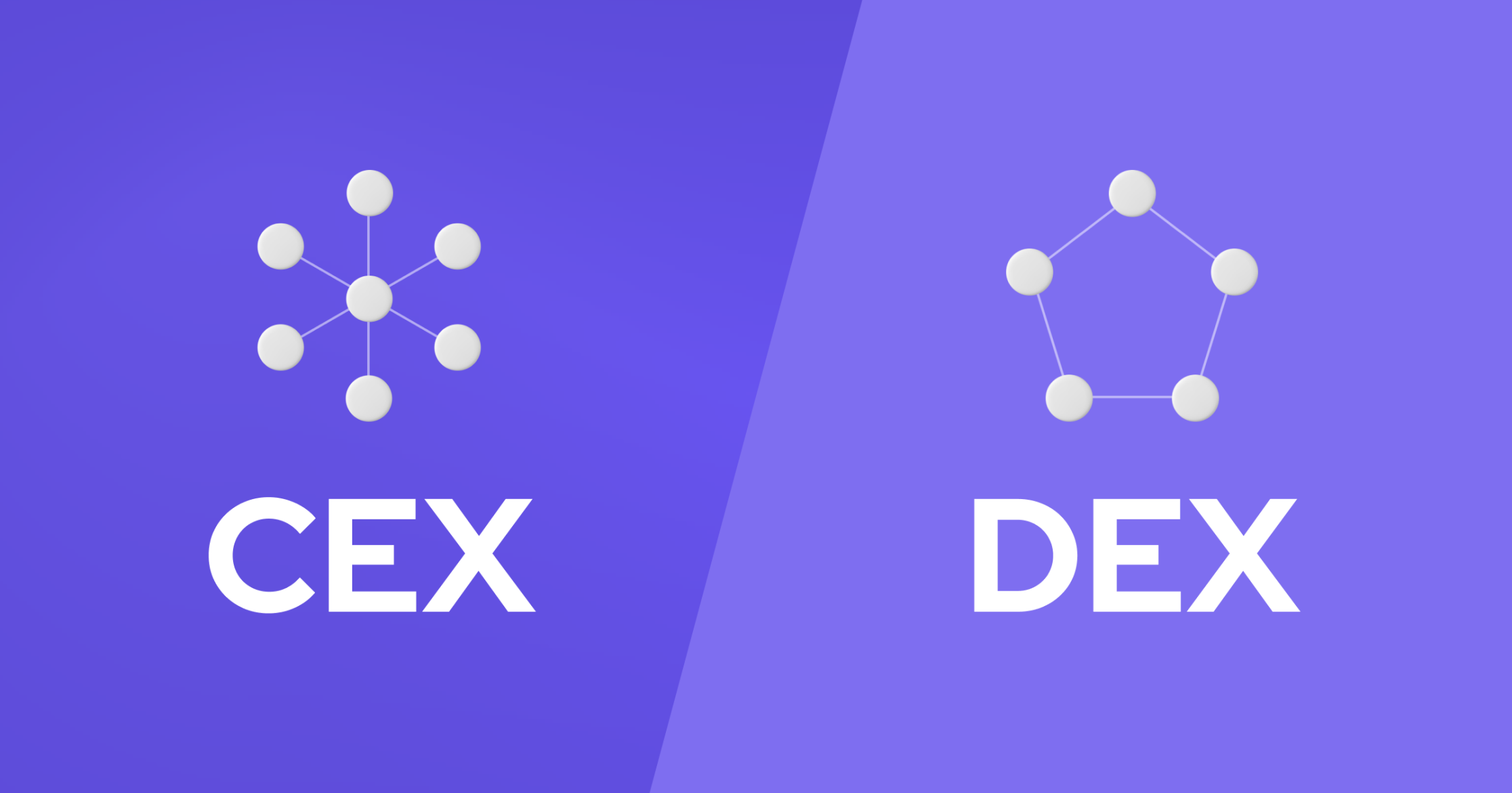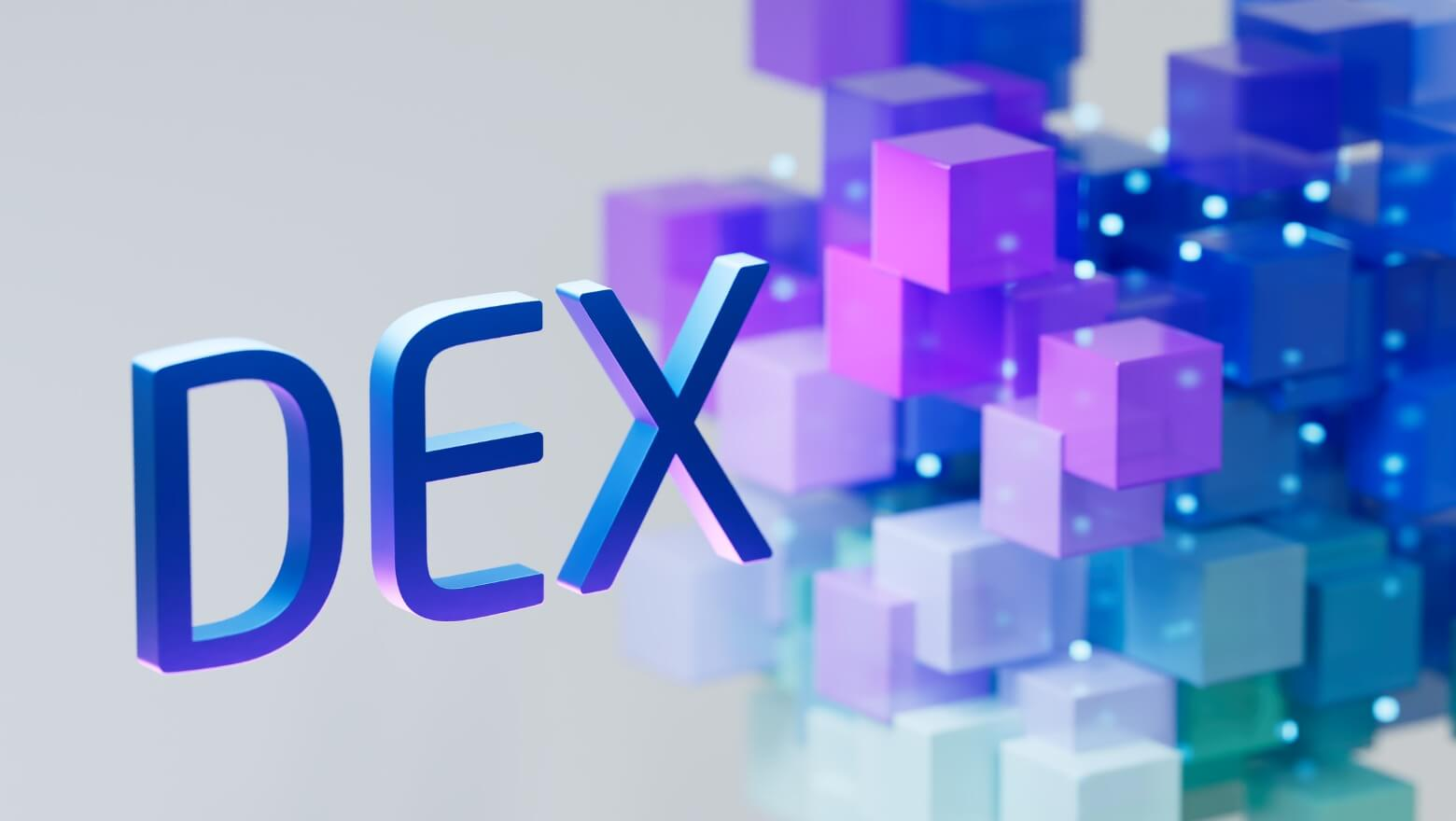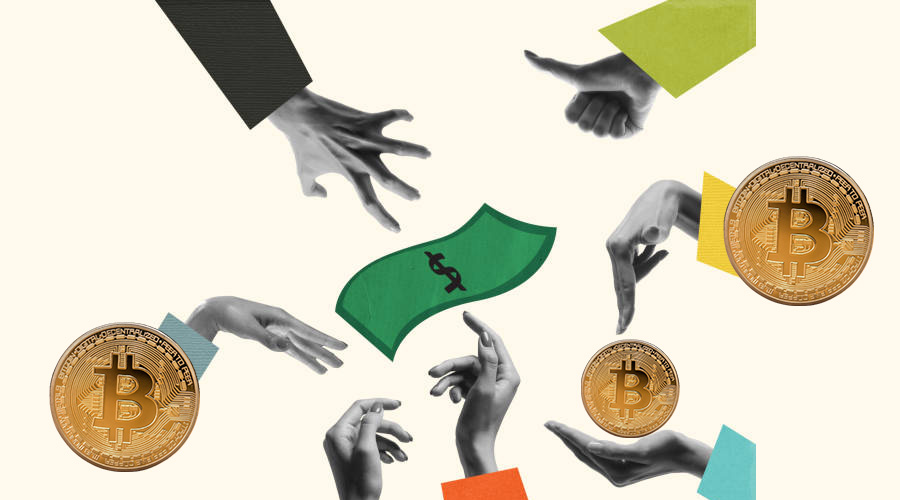Decentralized Exchanges Demystified: Navigating the Future of Crypto Trades
Why are traders turning to decentralized exchanges? Discover the unparalleled control and security of DEXs over traditional crypto exchanges. In this article, learn about the design, benefits, and essential considerations of trading on DEXs—information critical for both novice and experienced traders aiming to utilize these platforms.
Key Takeaways
- Decentralized Exchanges (DEXs) utilize smart contracts on blockchains like Ethereum to enable peer-to-peer cryptocurrency trading without middlemen, while users maintain control of their private keys.
- DEXs face challenges such as potential smart contract vulnerabilities, regulatory hurdles, and lower liquidity compared to centralized exchanges, but they also reduce counterparty risks and offer increased transparency.
- The DEX landscape is rapidly evolving with technology advancements and increased adoption; selecting the right DEX involves evaluating security, supported cryptocurrencies, and platform liquidity.
Understanding Decentralized Exchanges (DEXs)
In the ever-evolving world of cryptocurrencies, decentralized exchanges (DEXs) serve as a beacon of innovation. They operate differently from traditional centralized exchanges, offering a more transparent and secure platform for crypto trades. DEXs employ the power of smart contracts and blockchain technology to facilitate peer-to-peer trading without intermediaries, reducing counterparty risk and offering unprecedented control to the users.
Platforms such as Uniswap and Sushiswap, which operate on the Ethereum blockchain, demonstrate the accessibility inherent in DEXs by offering a broad range of tokens for trading.
What is a DEX?
A decentralized exchange (DEX) is often likened to a bustling marketplace, but with an added twist – it’s entirely online and operates on blockchain technology. It’s a place where users can trade cryptocurrencies directly with one another, bypassing traditional financial intermediaries such as banks or brokers.
The beauty of DEXs lies in their transparency and reduced counterparty risk. Every movement of funds is visible and traceable on the blockchain, offering a clear view of transactions and balances. In this way, DEXs execute trades while instilling confidence in their users, promoting a more secure and transparent cryptocurrency ecosystem.
Centralized vs. Decentralized Exchanges

Unlike centralized exchanges that are governed by a single organization, DEXs offer the following benefits:
- Users can trade directly from their wallets through smart contract interaction
- This direct wallet-to-wallet trading enhances privacy, security, and fosters a truly decentralized platform
- Trades on DEXs are executed through smart contracts and on-chain transactions, eliminating the need for a central authority
- This reduces potential data theft and improves settlement times
Nevertheless, the autonomy and freedom DEXs provide are associated with certain expenses. Users of decentralized exchanges typically have to pay network fees for processing transactions on the blockchain, as well as trading fees associated with the use of the platform. Despite these costs, many users prefer DEXs for their anonymity and the vision they represent – a future of permissionless access to an end-to-end on-chain trading infrastructure with no central points of failure.
The Mechanics of DEXs: How They Operate

DEXs function through the use of smart contracts, facilitating the automated matching and execution of buy and sell orders based on preset conditions. The extensive use of smart contracts ensures that assets remain securely within the users’ wallets until the trade is executed.
In the world of DEXs, there are two common designs: order book DEXs and automated market makers (AMMs). Each design has its own unique characteristics and functionalities. Each design has its unique features, and understanding these can help traders make the most of their trading experience on decentralized platforms.
Smart Contracts
Smart contracts are the heartbeat of DEXs, enabling automated, trustless transactions on these platforms. These self executing smart contracts translate agreement terms into code on the blockchain, thereby ensuring that the contract is executed exactly as agreed by the parties involved. On DEXs, smart contracts use algorithms to establish prices of cryptocurrencies and facilitate trades through liquidity pools.
Whether it’s an order book DEX or an automated market maker, smart contracts play a critical role in facilitating secure and transparent transactions, reducing potential for data theft, and improving settlement times.
Automated Market Makers (AMMs)
Automated Market Makers (AMMs) are another crucial component of DEXs. They provide liquidity using smart contracts and liquidity pools, enabling trustless transactions on decentralized exchanges. AMMs are integral to DEXs, automating the trading process and allowing users to trade against a pool of assets instead of waiting for a counterparty to match their order.
They attract liquidity providers who earn interest on their cryptocurrency holdings by depositing assets into a liquidity pool, an AMM, earning transaction fees, and through liquidity mining programs.
Order Book DEXs
Order book DEXs are a unique type of decentralized exchange that utilize an order book to match buyers and sellers. They come in two varieties: on-chain order books and off-chain order books. Fully on-chain order book DEXs, while offering a high level of transparency and security, face challenges like low liquidity and a less user-friendly experience.
Off-chain order books, on the other hand, help in reducing costs, increasing speed, and facilitating execution at desired prices, making them a popular choice among seasoned traders. However, it’s important to note that leveraged trading on DEXs with order books carries an increased risk of liquidation, necessitating the repayment of borrowed funds.
Getting Started with Decentralized Exchanges

Compared to conventional exchanges, DEXs are typically more complex, requiring users to possess a certain degree of blockchain technology expertise. Despite this, getting started with a DEX doesn’t have to be an intimidating process. It involves three key steps: selecting a compatible wallet, connecting the wallet to the DEX, and navigating the trading interface.
Let’s delve into each of these steps in detail.
Compatible Wallets
Before initiating trading on a DEX, it’s essential to secure a wallet that is compatible with the exchange’s network and is equipped with strong security features for private key safeguarding. Many DEX trading interfaces include integrated wallet support, enhancing the user experience by simplifying peer-to-peer lending and instant transactions. However, managing private keys without intermediary assistance can be challenging for new users.
Some recommended wallets for DEX trading are:
- MetaMask
- Trust Wallet
- Ledger Live
- MyEtherWallet
By using these wallets, you can ensure the safety of your private keys and have a seamless trading experience on DEX platforms.
Examples of wallets commonly used for trading on decentralized exchanges include MetaMask, Trust Wallet, Flooz, and Zerion.
Connecting Your Wallet to a DEX
After acquiring a compatible wallet, the subsequent step involves linking it to the DEX. This process typically involves navigating to the exchange’s interface, where you’ll get a pop-up prompt or find a ‘Connect Wallet’ button on the website of the DEX.
By following the prompts, you can link your wallet to the DEX, setting the stage for you to start trading.
Navigating the Trading Interface
Once your wallet is linked with the DEX, you’re nearly set to begin trading. But before you dive in, it’s important to familiarize yourself with the DEX trading interface. General features include a market view, order submission, and transaction history, which facilitate user trading.
A robust UI/UX and provision of instant alerts and notifications for trading opportunities are critical elements that enhance your trading experience.
Pros and Cons of Using DEXs

As with any technology, DEXs have their own unique set of pros and cons. On one hand, they offer non-custodial trading, where users keep control of their wallet’s private keys, emphasizing the non-custodial nature of DEXs. On the other hand, DEX users may face challenges such as a lack of technical knowledge, potential smart contract vulnerabilities, and the risk posed by unvetted token listings.
Let’s delve deeper into these pros and cons.
Benefits of DEXs
One of the most significant benefits of DEXs is the control they give users over their private keys, which enhances the security of their funds and preserves their anonymity. Smart contracts enable users to retain control of their funds during the trading process, mitigating the need for third-party custodians.
Additionally, decentralized exchanges often have lower transaction fees than their centralized counterparts, such as centralized exchange platforms, as they eliminate the cost associated with intermediaries.
Drawbacks of DEXs
Despite their many advantages, DEXs also have their drawbacks. Some of the primary challenges include:
- The absence of customer support services, which can be a significant issue for users needing assistance.
- The freedom and anonymity offered by DEXs can sometimes be a double-edged sword.
- The lack of stringent compliance standards makes DEXs more susceptible to illegal activities such as money laundering.
Moreover, DEXs typically have lower liquidity levels compared to centralized exchanges, leading to unfavorable trading conditions. Users also need to be aware of the additional gas fees for transactions on the Ethereum blockchain, which are separate from the trading fees charged by DEXs and can sometimes be higher than the DEX fees themselves.
The Evolving Landscape of Decentralized Exchanges

The DEX landscape is continuously evolving, influenced by market trends, advancements in technology, and shifting regulatory landscapes. With significant improvements in user interfaces and an expansion of features, DEXs are poised to contribute to broader blockchain adoption.
In this dynamic scenario, let’s explore the latest trends, the cutting-edge technology, and the regulatory challenges shaping the future of DEXs.
Market Trends and Adoption
DEXs have been experiencing notable growth in recent years. Here are some key statistics:
- In just the first quarter of 2021, the transaction volume on DEXs reached $217 billion.
- The user base of DEXs expanded to more than two million DeFi traders by April 2021.
- As of August 2023, DEX platforms represent 14% of the global trade volume, indicating their increasing presence in the cryptocurrency trading market.
This growth has been further bolstered by advancements in DEX tools by vendors who are enhancing their offerings to accommodate the growing user base.
Technological Advancements
Technological advancements have played a key role in the evolution of DEXs. Companies such as Bitdeal provide a range of decentralized exchange development services including DEX scripts, software, and applications tailored to the evolving DeFi ecosystem. These innovations have led to improved user interfaces, expanded features, and enhanced security measures, making DEXs more accessible and user-friendly.
Regulatory Environment
Regulation is a critical aspect of the cryptocurrency landscape, and DEXs are no exception. With the integration of AI and blockchain technologies, DEXs encounter additional layers of regulatory complexity. However, smart contracts in DEXs can be programmed to follow regulations, including Anti-Money Laundering (AML) and Know Your Customer (KYC) standards, aiding in compliance.
The Digital Operational Resilience Act (DORA) is a regulatory initiative aimed at bolstering the cyber resilience of financial entities, impacting infrastructures like DEXs. To navigate and comply with the evolving regulatory landscape, including data privacy concerns and financial crime prevention, DEXs must develop an understanding of key regulations and adopt best practices in risk management, employing the latest Governance, Risk, and Compliance (GRC) software and AI.
Achieving regulatory compliance and operational efficiency is crucial for DEXs to effectively respond to regulatory change.
Selecting the Right DEX for Your Needs
Selecting the right DEX for your trading needs can be a challenging task given the myriad of options available. Factors like:
- Security measures
- Supported cryptocurrencies
- Liquidity needs
- Platform-specific trading dynamics
are crucial considerations when choosing a DEX.
Advanced features like atomic swaps, risk-free transactions through smart contract integration, and decentralized order books may provide a more robust trading environment.
Key Factors to Consider
In the process of selecting a DEX, prioritizing security is crucial. The DEX should employ robust security measures, and support the cryptocurrencies you intend to trade.
Liquidity is another vital factor to consider as it’s essential for executing trades effectively on a DEX platform. As a new user, it’s advisable to start with small trades to familiarize yourself with the platform-specific trading dynamics and functionalities.
Popular DEX Platforms
You might consider a variety of popular DEX platforms. Order book DEXs, for instance, are a type of decentralized exchange that utilizes an order book to match buyers and sellers, allowing for more traditional market trading experiences. Some examples of popular order book DEXs are:
- 0x
- dYdX
- Loopring DEX
- Serum
These platforms are well-known for their trading features, making them an ideal choice for a trading platform.
Each of these platforms offers unique features and advantages, and understanding these can help you select a DEX that best suits your trading needs.
Summary
In conclusion, decentralized exchanges represent a significant shift in the way we trade cryptocurrencies. They offer a host of benefits including user-controlled private keys, enhanced security, and lower transaction fees. However, they also come with challenges such as lack of customer support, susceptibility to scams, and lower liquidity. As the DEX landscape continues to evolve, it’s important for traders to stay updated with the latest market trends, technological advancements, and regulatory changes. Understanding these aspects will enable them to make informed decisions and effectively navigate the future of crypto trades.
Frequently Asked Questions
What is an example of a DEX?
Uniswap and Sushiwap are popular examples of DEXs, which operate on the Ethereum blockchain, providing a peer-to-peer marketplace for direct crypto transactions.
What exchange is decentralized?
Uniswap and Sushiwap are decentralized exchanges (DEXs) that run on the Ethereum blockchain and provide a peer-to-peer marketplace for cryptocurrency transactions, making them decentralized exchanges. This allows transactions to occur directly between crypto traders, offering a non-custodial platform for users to remain in control of their private keys.
How do DEXs work?
DEXs work by using smart contracts to automate the trading process, allowing for automatic matching and execution of buy and sell orders while securely holding the assets in users’ wallets until the trade is completed.
What are the benefits and drawbacks of using DEXs?
Using DEXs provides benefits such as user-controlled private keys, enhanced security, and lower transaction fees. However, drawbacks include lack of customer support, susceptibility to scams, lower liquidity, and additional gas fees for transactions on certain blockchains.
What factors should I consider when selecting a DEX?
Consider factors such as security measures, supported cryptocurrencies, liquidity, platform-specific trading dynamics, and functionalities when selecting a DEX. Familiarizing yourself with these factors will help make an informed decision.

